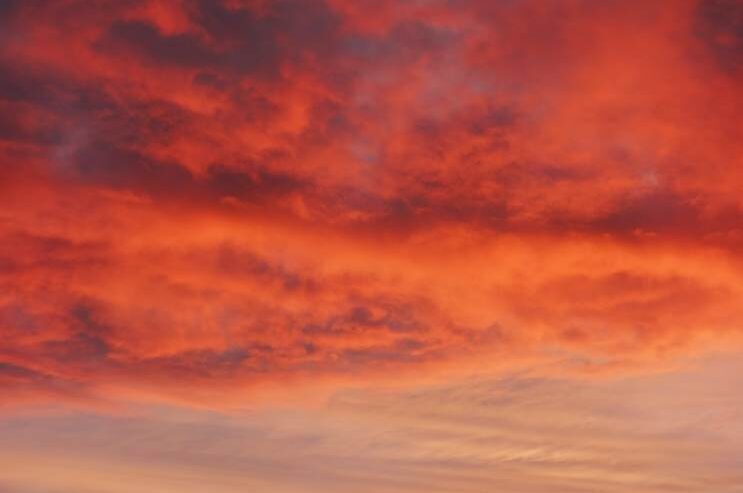Sahara dust cloud arrives in Mexico – What does this mean for people with respiratory problems
Each year a dust cloud leaves Africa’s Sahara Desert and travels across the Atlantic ocean, Caribbean Sea, and the Gulf of Mexico to reach the USA. The massive dusty and dry air cloud is also known as the Saharan Air Layer.
This Pacific Prime Latin America article will cover all the essential facts about the Saharan dust cloud. Read on to know more about dust clouds and their harmful effects on respiratory health. Also, learn how to protect yourself and your loved ones when a dust cloud appears.
How is the Saharan dust cloud formed?
The Saharan dust cloud, also referred to as the dust plume, forms over the Sahara Desert in late spring, summer, and early fall. This happens because of the extremely high temperatures in the Saraha Desert that can last for days on end. Hot and dry air rises from the surface because of the heat. The air picks up and carries fine particles from the Sahara, forming a dust plume.
The dust-filled air slowly makes its way to the high levels of the atmosphere, where winds called the Easterlies or Trade Winds carry the dust plume about 3,000 miles across the Atlantic Ocean into the Western Hemisphere.
Note that cities along the Gulf Coast of the US face the adverse effects of the dust cloud.
What is the amount of dust present in a dust cloud?
The amount of dust collected each year depends on the rainfall in the south of the Sahara region. However, according to a NASA report, the wind and weather picked up about 182 million tons of dust each year.
The dust clouds are so huge that satellites can track their activity.
What are the signs of a dust cloud?
The skies in the areas covered by dust clouds appear hazy or milky, depending on the thickness of the dust cloud. The sunsets in these areas also appear ‘redder’ than usual.
Dust clouds are massive and appear in bright orange-red colors. The colors and the haze can make snow mountains look like dunes.
What are the benefits of dust clouds?
Although dust clouds are harmful to human health, they help with climate change and enhance the quality of the environment. Here is a list of a few advantages of the dust cloud:
- The surface dust deposits are rich in micronutrients that benefit continental and maritime ecosystems.
- The dust helps fertilize the Amazon rainforest.
- The dust clouds transport iron and phosphorus, promoting marine biomass production in the ocean.
- Dust clouds keep hurricane development in check.
What are the adverse effects of dust clouds?
Dust particles in the air are never a good sign. Dust clouds bring along a host of problems with them. Let’s take a quick look at some of its harmful effects on the environment:
- Reduces crop yields by burying the seedlings
- Negatively affects photosynthetic activity and increases soil erosion.
- Dust piles up in irrigation canals may impact the free flow of water and deteriorate water quality.
What is the impact of Saharan dust on human health?
Airborne dust particles are dangerous to human health. The Saharan dust cloud consists of smaller and larger dust particles, and different size particles harm human health in different ways. Here is a list of disadvantages based on the particle size:
Disadvantages of dust particles smaller than 10 μm:
- Dust gets trapped in the nose and upper respiratory tract leading to diseases such as allergies, pneumonia, asthma, etc.
- Finer dust particles can enter the bloodstream and lead to cardiovascular disorders.
- Dust can transmit infectious diseases.
- May lead to Meningococcal meningitis – can cause brain damage if left untreated.
Disadvantages of dust particles larger than 10 μm:
- Larger dust particles affect the external organs such as skin and eyes.
- Dust in the eyes may cause irritation and, in some cases, lead to conjunctivitis.
- Dust gathered on the skin may lead to skin allergies and irritation.
How to protect yourself from a dust cloud?
Dust cloud reduces air quality and visibility and creates terrible health conditions. However, you could always take precautions and prepare yourself before a dust cloud appears. Here is a list of things you could do during a dust cloud warning:
- Stay indoors and avoid stepping out as much as possible.
- Mask up! A P2 or P3 mask will be able to block even the finest particles.
- If you have diabetes or any respiratory diseases, avoid intense workouts.
- Keep doors and windows shut.
- Seek medical help if you develop symptoms, such as shortness of breath, chest pain, cough, etc.
- Avoid driving as dust clouds lead to poor visibility.
If you live in a city where dust clouds are common, it is a good idea to secure you and your loved ones with medical insurance or AD&D insurance. With good insurance coverage, you can be ready for any unlikely diagnosis or accident without worrying about your finances. But, of course, you can always contact a Pacific Prime expert to learn about available plans.
About Pacific Prime Latin America
Pacific Prime Latin America offers unparalleled insurance services across multiple categories. Whether you are looking for individual health insurance or family health insurance, experts at Pacific Prime will be able to help you find the right insurance plan.
Get in touch with Pacific Prime Latin America to compare insurance plans today!
- AI Anxiety Is Real, and Here’s How You Can Deal With It - May 4, 2023
- Complete Guide to Medical Tourism in Mexico - March 15, 2023
- Everything you need to know about monkeypox - December 2, 2022




Comments
Leave a Comment